FunKey Maths Cards in School
Maths cards are a great way of teaching maths to primary school children. Build skills and confidence in maths
Teaching maths in primary school
Children love playing with maths cards. They enjoy playing with them and with adults and friends. Children build their skills and confidence through repeated play.
Our programmes of intervention activities ensure that gaps in skills and knowledge can be identified and filled quickly, so that solid mathematical foundations can be put in place to ensure future success.
Support for maths teachers
We are teachers too, so know you want reliable, ready-to-use resources.
Our activity notes, online videos, powerpoints and worksheets help you to get the most out of the cards, and deliver engaging, interactive experiences for your children, in and out of maths lessons.
Maths cards in the primary school classroom
- Maths cards can be used in whole class, small group or 1:1 settings.
- Maths cards can be used in whole class maths lessons to give all children chance to develop and practise new skills and knowledge in an interactive, hands-on way.
- Use the cards as educational play-breaks outside the main maths lesson. Once children learn the games, they want to play more.
- Use the cards with our activity programmes as a structured, easy-to-run intervention for children who need additional support. Teaching assistants, adult volunteers and peer mentors age 9+ can run the interventions with minimal training.
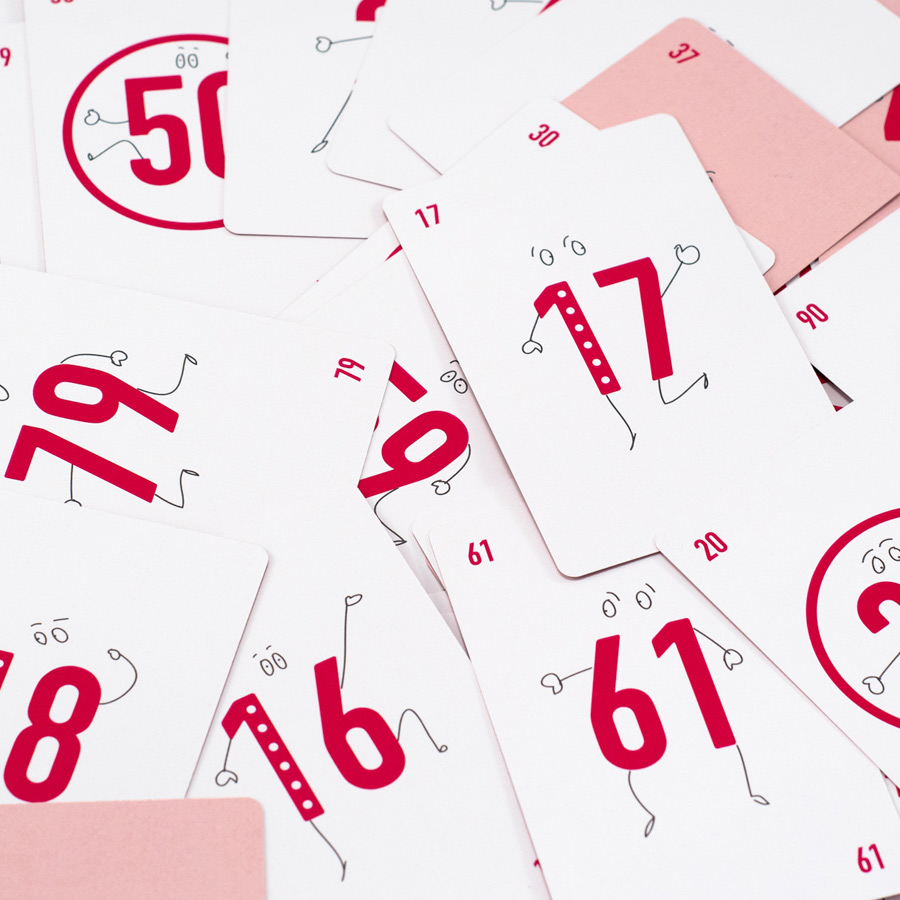
Teaching counting and place value in early years
Age 4+ – great for:
- Numbers up to 100
- Counting in 1s and 10s
- Reading numbers
- One more, one less
- Ordering numbers
- Adding and subtracting 10
- Partitioning
- Combining

Teaching doubling and halving in KS1 and KS2
Age 5+ – great for:
- Subitising
- Adding single digits
- Subtracting single digits
- Simple addition sentences
- Doubles to 20
- Halves to 20
- Linking doubles to 2x table
- Multiplication expressions

Teaching times tables using maths cards
Age 5+ – great for:
- Step counting
- Rapid recall
- Linking x and ÷
- Factors, products, multiples
- Square and primes
- Multiplicative bar models
- Rounding to 10
- Reasoning
Private: Counting and Place Value Maths Cards
£10.00 plus VAT
The counting cards and the programme of activities which accompany them are a fantastic way to help children who still need to develop a firm understanding of the number system up to 100.
We combine a small steps approach with games and activities that facilitate intelligent practice. This approach works really well in interventions with children who have fallen behind their peers, or have developed maths anxiety.
Many of the activities can also be used whole class.
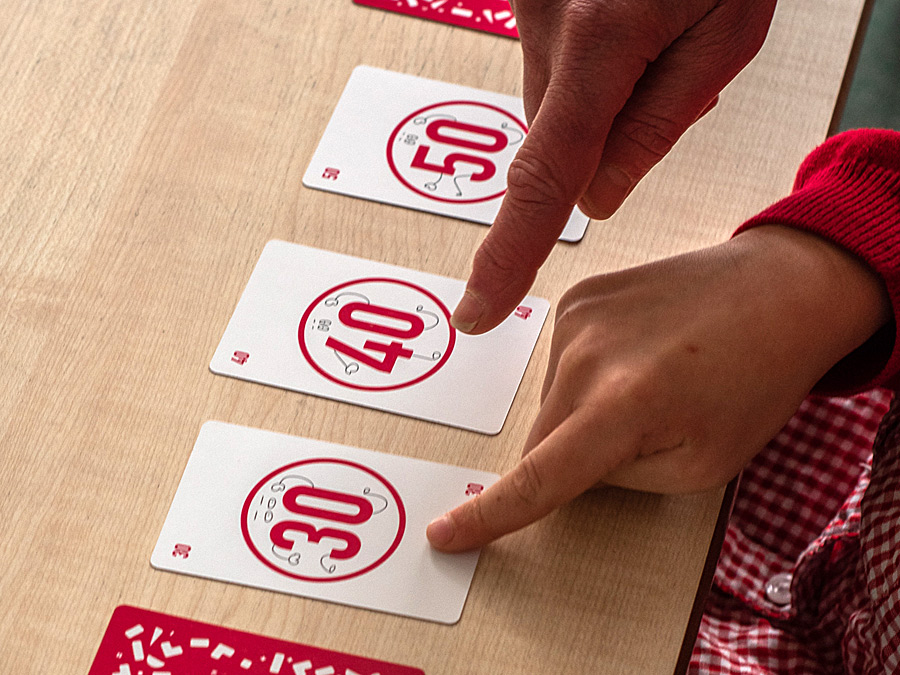
Understanding numbers and learning to count up to 100
When children can count fluently in ones to 100, it is easy to assume they have grasped the number system. But often children who are falling behind have not yet developed proper number sense.
Our cards and activities are designed to move children beyond rote memory counting to developing number sense for numbers up to 100. That means getting to grips with:
- Reading numbers
- Counting in 1s and 10s
- Ordering numbers
- Identifying one more and one less, ten more and ten less
- Partitioning numbers
- Combining multiples of 10 and single digits
- Adding or subtracting 1 or 10 to any 2-digit number
Closing attainment gaps in KS1 maths
With support from Nesta’s Maths Mission, FunKey Maths has created a structured programme of activities to close attainment gaps in number sense and place value in KS1.
There are four units in the programme which progressively build up children’s skills and confidence.
- Unit 1: Counting in 1s forwards and backwards to 20
- Unit 2: Counting forwards in 1s and 10s to 100
- Unit 3: Counting backwards from 100 in 1s and 10s
- Unit 4: Place Value (2 digits)
The activity notes are comprehensive and there are videos of many of the activities so that with minimal training adults or peer mentors (aged 9+) can work through the activity programmes and facilitate the activities.
Doubling and Halving Maths Cards
£10.00 plus VAT
The FunKey Maths doubling cards offer so much more than help with rote recall of doubles.
Great for working on subitising, simple addition and doubles up to 20. And, link doubles to the 2x table!

The dot cards are great for work on subitising and for understanding what a double is.
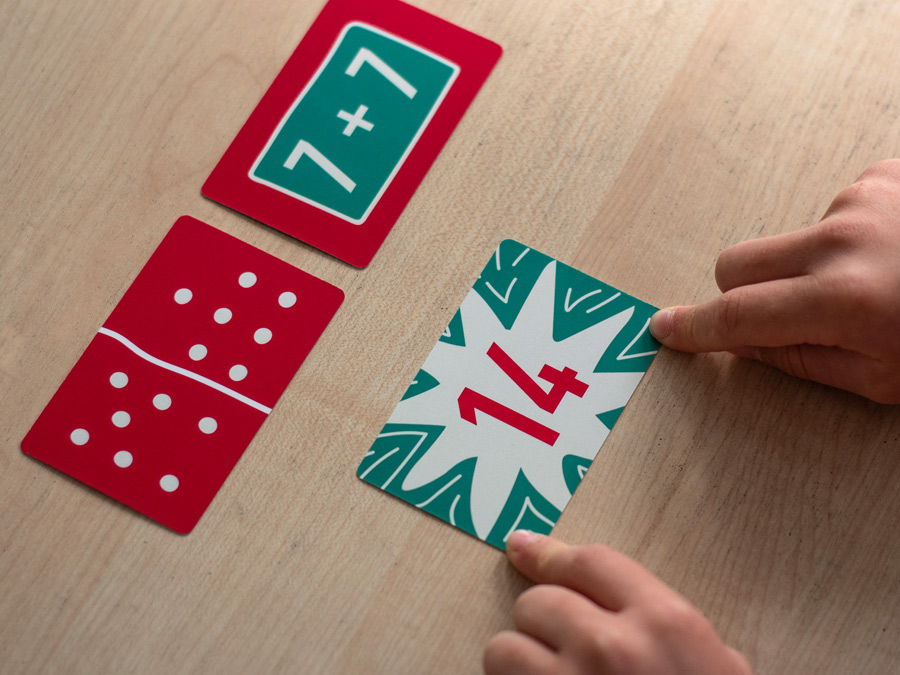
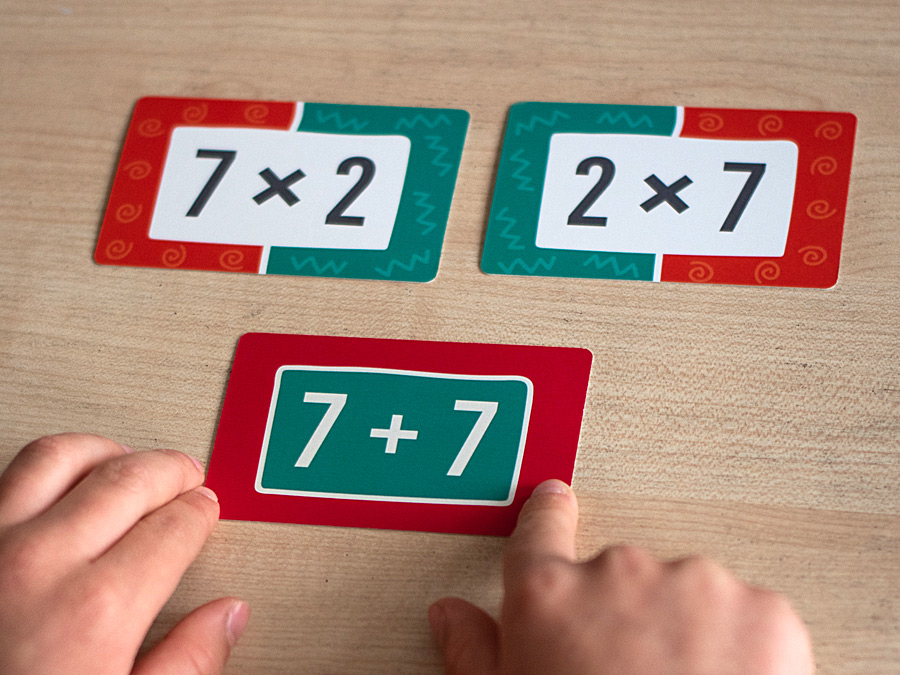
Maths games and activities to teach doubling and halving
Rapid recall of doubles and halves is a foundational maths skill needed up to and beyond GCSE. Children need to have a thorough conceptual understanding of what a double is and the different ways it can be presented. To support teachers introducing the concepts to their class, we have developed free powerpoint resources and worksheets.
The cards help children explore the concepts and secure rapid recall of facts in a fun, inter-active way.
Games like Match, Pairs, Slap Bingo and Snap are easy to play, but hugely enjoyable for children. They willingly play again and again, ensuring they get the repeated practice they need to develop their skills and confidence.
The games work well in whole class or intervention settings.
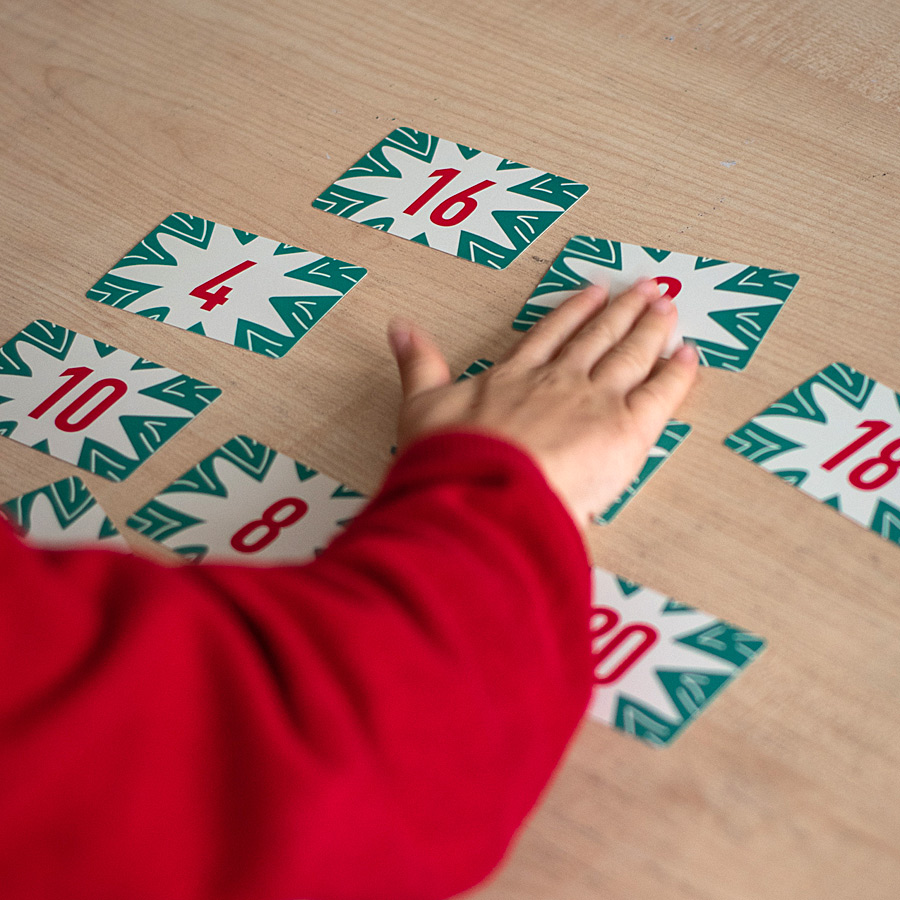
Closing attainment gaps in KS2
Many children start KS2 without a secure understanding of subitising, simple addition and multiplication and without knowing doubles and halves to 20. If not filled, these gaps hold children back and embed an expectation of underachievement in maths.
Our structured programme of ten easy to play games and activities to help children secure rapid recall of doubles up to 20 can be used in whole class or intervention settings to identify and fill gaps in knowledge.
This 10 step programme of activities is perfect for a FunKey Maths peer mentoring intervention.
Times Tables Maths Cards
£10.00 plus VAT
Great for children who need to learn times tables. Great for children who want fun ways to practise times tables or who are ready to explore multiplication and division in more depth.
You can use the cards to support a mastery approach to teaching multiplication and division, including developing mathematical reasoning skills, or you can simply use the cards as a way to motivate children to develop fluent recall of both multiplication and division facts.

Use maths cards for teaching maths in primary school to develop fluency and rapid recall of facts
The colour coding helps children develop rapid recall of facts. Each times table has its own colour and pattern. So, for example, if a product is in the 7x table, there will be orange on the card.
Step counting is a great way to start to develop fluency and is so easy to teach using our ready-made step counting powerpoints.

As children become familiar with the colour coding, they can retrieve number facts just by picturing a card. This really supports children with good visual memories and can be a game-changer for children who have struggled to remember facts using traditional auditory methods such as chanting.
Our FunKey cardholder and product charts are a great way to incentivise children to focus on practising recall of facts on target cards.

Teaching maths in primary school to develop conceptual understanding
With the FunKey Times Tables cards, children don’t learn facts in isolation, they learn related facts together. This helps support conceptual understanding but also massively reduces the burden of learning times table facts. Instead of having to learn over two hundred apparently unrelated multiplication and division facts, they work on just 59 cards.
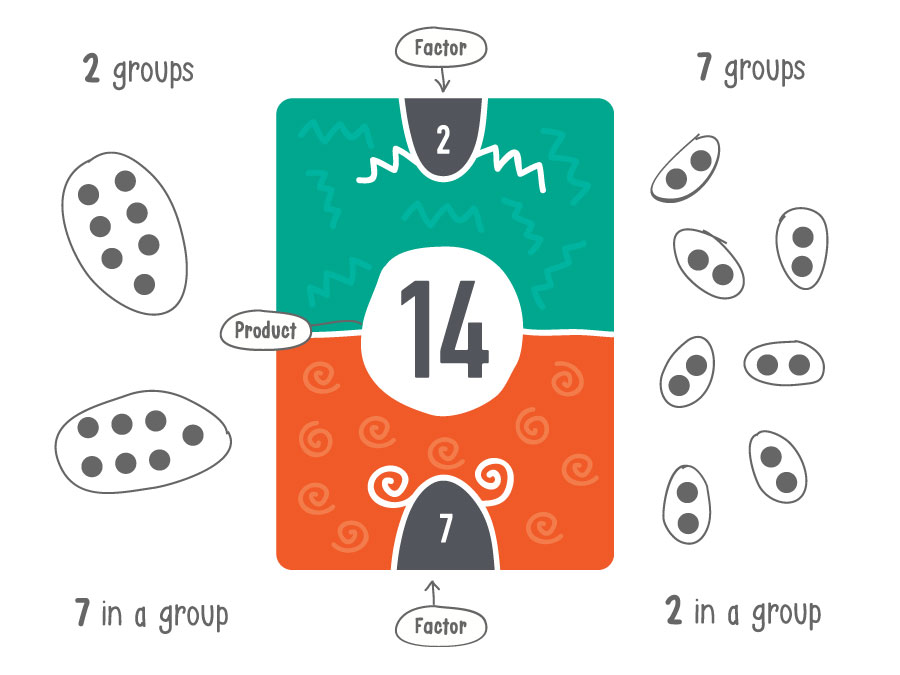
*Cards show all factors up to 12 x 12 excluding 1 and the product itself which are always factors.
Children quickly grasp that the factors round the edge of the card show different ways the product can be divided into equal groups.
Children start to see how to link the numbers on a card and articulate both multiplication and division facts…
If you have 14 sweets, you can put them into 2 equal groups and there are 7 sweets in each group.
Or, you can have 7 equal groups and there are 2 sweets in each group.
Watch children in Year 3 working on card 14…
The shapes around the product carry meaning
Ordinary products are in circles, square numbers are in squares and prime numbers are in kites! The meaning of square number and prime number are easy to see!
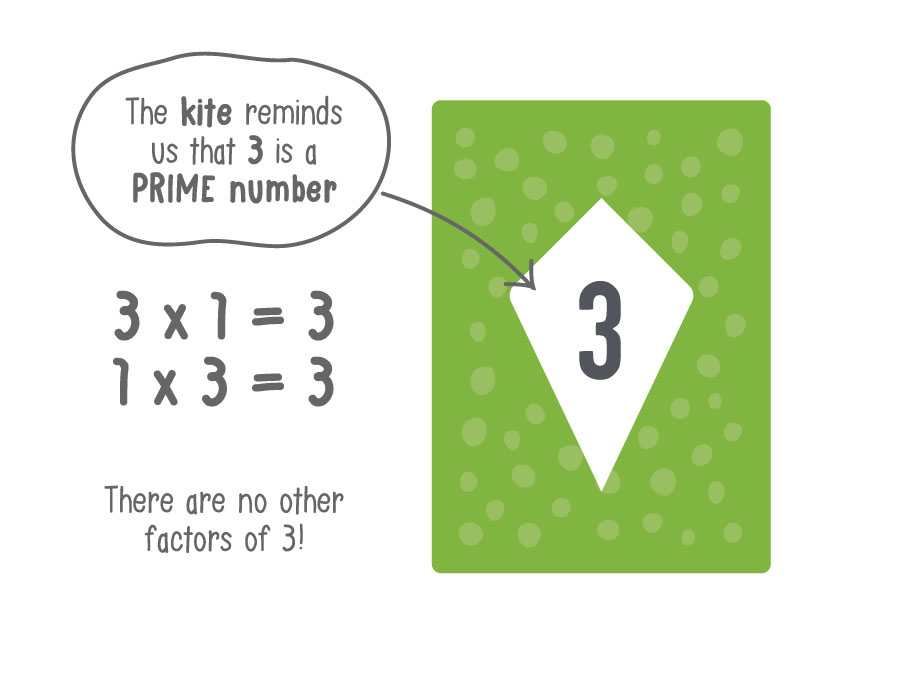
You don’t see any factors on a prime number card because the only factors are 1 and the product itself which aren’t shown on any of the cards.
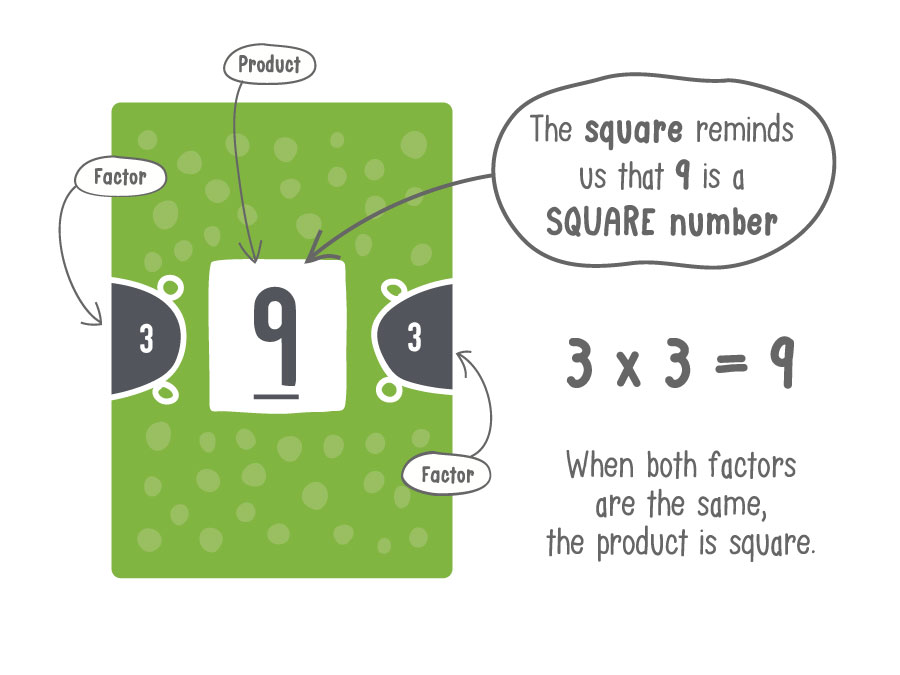
When you multiply two factors which are the same, you get a square number.
Develop reasoning in maths
It is so important to move beyond rote recall of facts to develop reasoning and the ability to explain mathematical thinking. The cards are catalysts for discussion between children and are springboards to higher level thinking.
For example, children notice the relationships between factors. They can soon see that if one factor doubles and the other halves, the product doesn’t change!
This fact is hugely helpful!
4.5 x 18 looks like a very tricky calculation, until you double one factor and halve the other. Now the calculation is easy!
4.5 x 18 = 9 x 9 = 81
Our huge range of free ready to use printable resources helps you develop children’s ability to reason and articulate their thinking.
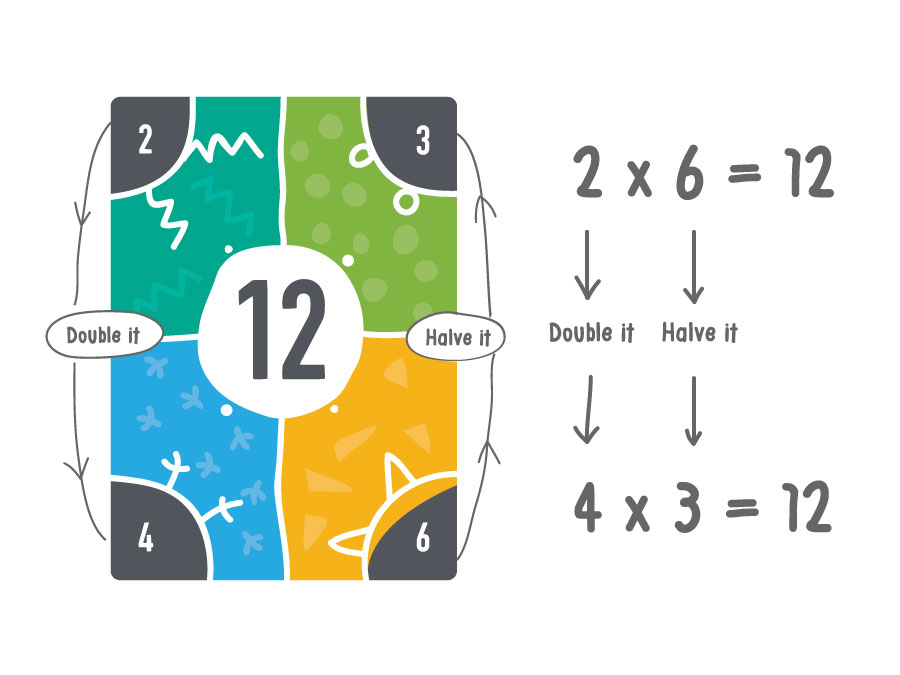
If one factor doubles and the other factor halves, the product doesn’t change.

Teaching maths in primary school with game-based learning
Research shows the power of games-based learning for children. Play provides a safe, fun, sociable space to learn and can build and restore confidence.
There are twelve games to play with the FunKey Times Table cards, including FunKey versions of old favourites such as Uno.
Even when games are not focussed directly on practising times tables facts, children are absorbing information from the designs which will help them recall number facts.
There are six games for children in KS1, and six for KS2.
